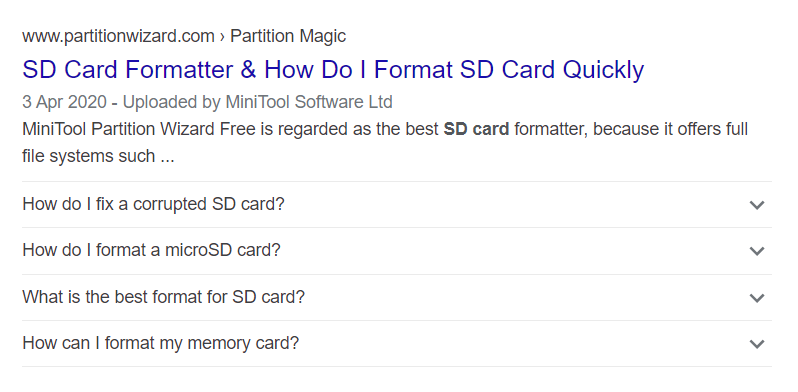

Looking at the HTML of that page, we find a number of JSON-LD sections: Screenshot of JSON-LD sections in the BBC Good Food website If we click on the first link, we’re taken to the recipe in question. Where did this come from? The answer, unsurprisingly, is structured data. When you look at the screenshot above, you’ll notice that at the top of the list (before the main search results) there’s a carousel that shows various brownie recipe links with dedicated pictures, titles and descriptions. For instance, let’s search for “best brownie recipe” in Google and see what shows up: While structured data is helpful for search engines in general, it can also impact the way your content is rendered inside search results. "description": "The most amazing chocolate brownie recipe", JSON-LD is effectively a rending of a piece of JSON inside a script tag with the custom type of application/ld+json. Google explicitly prefers JSON-LD, so that’s what we’ll focus on on this tutorial. Just like there are many different types of structured data, there is a wide range of formats you can use to provide it, including JSON-LD, Microdata, and RDFa. For instance, you’re likely to use Article a great deal more often than, perhaps, MolecularEntity. There are many types of structured data available, from popular options to those that are more niche. You can read about all of them in depth at, which is maintained by representatives of the search engine community. There are hundreds of types of structured data available.

You can reliably state in a language that Google understands, “This page is an article that has this title, a description, and and image and was published on this date.” This standardized format allows you to explicitly declare the type of content the page contains. To make it easier for search engines to digest the content of your site, you can embed a standardized format known as structured data within a page. HTML is all about presentation and it can be structured in a variety of ways. However, scraping HTML is not a particularly reliable way to categorize content. Google, DuckDuckGo, and other search engines are proficient at understanding the content of websites. We’ll illustrate how this works by building a simple React app that incorporates structured data.
#Adding rich snippets to website how to#
In this guide, we’ll show you how to add structured data to your site.Īdding structured data helps search engines such as Google understand your content and get it in front of more eyeballs. If you have a website, making it discoverable is of paramount importance.
#Adding rich snippets to website movie#
John Reilly Follow MacGyver turned Dev 🌻❤️ TypeScript / ts-loader / fork-ts-checker-webpack-plugin / DefinitelyTyped: The Movie React, structured data, and SEO


 0 kommentar(er)
0 kommentar(er)
